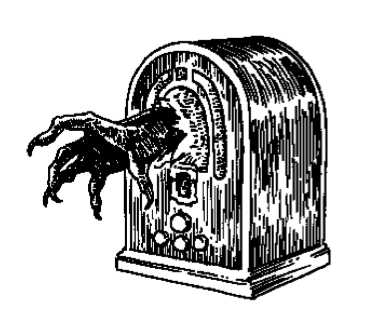The movie poster for Hostel: Part II featured a slab of glistening boar meat, simulating freshly skinned human flesh. The sequel followed three American coeds trapped in a factory where sadists pay to torture and kill backpackers. The film’s director, Eli Roth, banks on queasy close-ups of pain: the torture of a naked girl dangling from the ceiling, a live victim carved into sushi, and the climactic castration of an executioner. The marketing campaign and story line stirred up pockets of moral outrage, but the film spent less than a month in theaters this summer, grossing $28 million at the box office—a fraction of the first film’s total haul.
Nevertheless, the New York–based Museum of the Moving Image enshrined the franchise in a special horror series called It’s Only a Movie. The exhibit’s press release explained that director Roth and his contemporaries are leading “a resurgence in production, popularity, and inventiveness unparalleled since the rise of the indie horror movement in the 1970s.”
While the exhibit focused on recent film history, I discovered an eerily similar story buried in a sixty-year-old radio program. Recorded in 1942 for the radio show Lights Out, the drama was broadcast under familiar circumstances: one year after a terrorist attack on Pearl Harbor and one year into an uncertain war. The show opened with radio writer Arch Oboler warning his audience: “We urge you calmly, but very sincerely, if you frighten easily, turn off your radio now.”
He wasn’t kidding. I’d been expecting cheesy lingo, campy monsters, and vintage cigarette commercials, but Oboler shocked me. The episode follows a precocious American girl prowling Paris for action, just like Roth’s European backpackers. “Men looking at me,” she moans. “Oh, if I could only talk French. Fun, I gotta have fun!”
In less than ten minutes, she is kidnapped by a sewer-dwelling killer who skins the corpses of suicides. “Their miserable unhappy flesh, I take it off them,” he laughs. “Then at last, they are bones—hard, white, useful bones.” He proceeds to saw into a corpse’s skull with vivid sound effects, and abuses the girl physically and psychologically for the rest of the episode—ultimately forcing the girl to chop up bodies in his workshop. She survives, but the trauma transforms her into a raving lunatic.
Few remember Oboler, but his gruesome methods are back in style. According to the bean counters at Box Office Mojo, Roth’s original Hostel grossed $47 million domestically—nearly ten times its production budget. It joined a string of ultraviolent blockbusters released over the last three years, including the mounting domestic successes of Saw ($55 million), Saw II ($87 million), and Saw III...
You have reached your article limit
Sign up for a digital subscription and continue reading all new issues, plus our entire archives, for just $1.50/month.
Already a subscriber? Sign in





